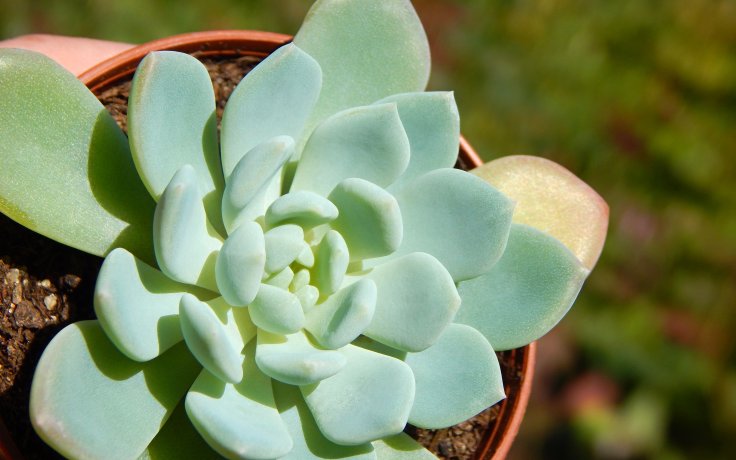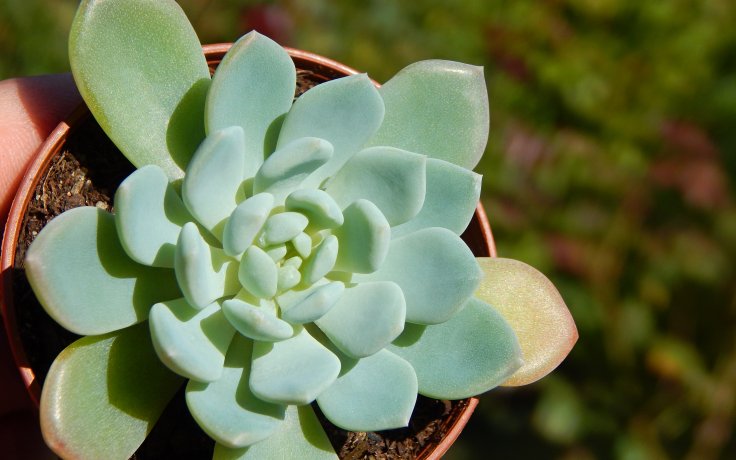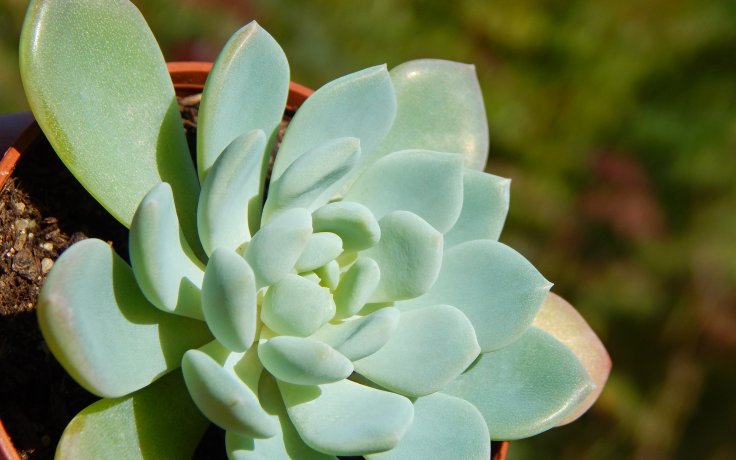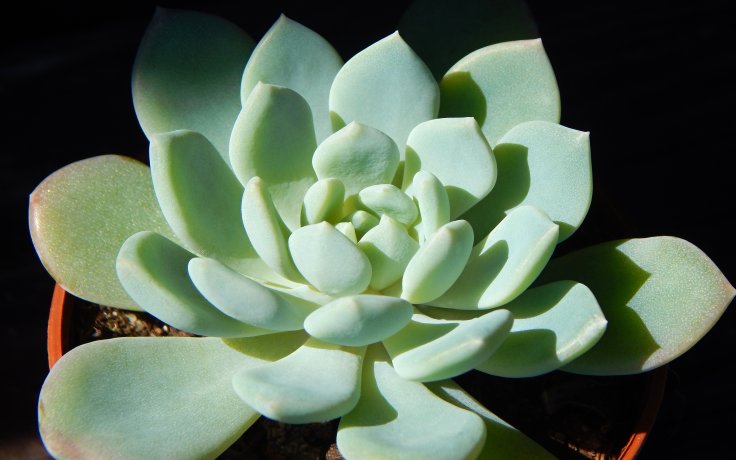- Home
- Succulents
- Echeveria
- Echeveria apus





Echeveria apus
The plant likes sunny habitats.
Always water a few days after the substrate has dried out. In winter, limit watering.
It can tolerate -1.1 °C in the short term. However, the plant is not hardy.
Echeveria apus is a group of forms or hybrids that are not clearly defined. The name is not completely definitive and we may encounter several plants that are slightly different in appearance.
Echeveria apus impresses with its unique appearance. The origin of this plant is not known with certainty, but it most likely comes from Mexico. There are several similar forms or hybrids under the name apus. Thus, we can also find slightly different plants with the same name.
The leathery leaves turn blue-green in the sun with distinctive reddish edges and tips. The leaves are fleshy, lance-shaped, small and slightly pointed at the apex. The lower leaves dry naturally and contrast with the lush upper part of the plant. The trunk is flat and leathery. The succulent grows to a height of about 15 cm.
The succulent may produce yellow flowers in late summer.
If you want to move the plant outdoors in spring, do so gradually so that it gets used to the more intense sunlight and does not burn its leaves. From spring to autumn, water it using the 'soak and dry' method, i.e. let the substrate dry out between waterings. Make sure the pot is not standing in water. The plant grows quite quickly and does not need fertilising. The colour of the leaves changes throughout the year. You can also find the crested form of Echeveria apus in our shop, which is characterised by smaller and denser leaves due to its crested growth. However, the classic form pleases not only with its leaves, but also with its attractive yellow flowers and the changing shape and colour of the leaves.